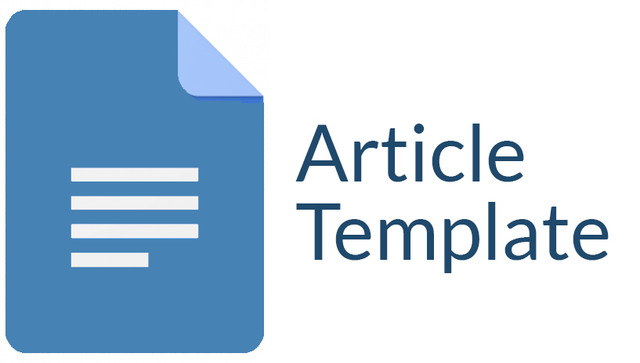Analisis Kesalahan Translasi Matematis dari Representasi Verbal menuju Representasi Simbolik
DOI:
https://doi.org/10.53624/ptk.v4i1.312Keywords:
kesalahan translasi, representasi verbal, representasi simbolikAbstract
Kesalahan translasi representasi masih sering terjadi saat siswa memecahkan masalah matematika. Padahal translasi representasi merupakan aspek kunci dalam keberhasilan memecahkan masalah tersebut. Masalah tersebut terlihat saat siswa memecahkan masalah soal cerita aritmatika sosial yang mengharuskan melakukan translasi dari representasi verbal menuju representasi simbolik. Oleh karena itu, penelitian ini bertujuan untuk memotret kesalahan yang terjadi saat melakukan translasi representasi verbal menuju representasi simbolik. Penelitian dilakukan pada 32 siswa SMP di Kediri pada saat memecahkan soal aritmatika sosial. Penelitian ini menggunakan metode penelitian kualitatif dengan tujuan menganalisis kesalahan siswa saat memecahkan masalah dengan memverifikasi setiap langkah translasi, dilanjutkan dengan wawancara mendalam terhadap subjek. Berdasarkan analisis yang dilakukan, peneliti menemukan terdapat 2 jenis kesalahan yang berbeda saat subjek melakukan pemecahan masalah. Adapun kesalahan tersebut meliputi, yang pertama subjek kesulitan memecah informasi pada representasi sumber, sedangkan yang kedua, subjek tidak tepat dalam mengkoordinasikan representasi sumber ke representasi target. Subjek mengalami kesulitan menentukan representasi perantara yang digunakan sehingga melakukan koordinasi secara berulang-ulang.
Downloads
References
DAFTAR PUSTAKA
Adu-Gyamfi, K., Stiff, L., & Bossé, M. J. (2012, in press). Lost in translation: Examining translation errors associated with mathematics representations. School Science and Mathematics Journal. http://dx.doi.org/10.1111/j.1949-8594.2011.00129.x
Ainswroth, S. E. (1999). Designing Effective multi-representational Learning Environments, PhD Thesis and technical report number 47, ESRC Cent. Res. Dev. Instr. Train. Univ. Nottingham. Dapat diunduh di https://www.academia.edu/2622399/Designing_effective_multi_representational_learning_environments
Bal, A. P. (2014). The examination of representations used by classroom teacher candidates in solving mathematical problems. Educational Sciences: Theory and Practice, 14(6), 2349– 2365. http://dx.doi.org/10.12738/estp.2014.6.2189
Birgin, O. (2012). Investigation of eighth-grade students’ understanding of the slope of the linear function. Bolema: Boletim de Educação Matemática, 26(42A), 139–162. http://dx.doi.org/10.1590/S0103-636X2012000100008
Caglayan, G., & Olive, J. (2010). Eighth grade students’ representations of linear equations based on a cups and tiles model. Educational Studies in Mathematics, 74(2), 143–162. http://dx.doi.org/10.1007/s10649-010-9231-z
De Bock, D., Van Dooren, W., & Verschaffel, L. (2015). Students’ understanding of proportional, inverse proportional, and affine functions: Two studies on the role of external representations. International Journal of Science and Mathematics Education, 13(1), 47–69. https://doi.org/10.1007/s10763-013-9475-z
Duval, R. (2006). A cognitive analysis of problems of comprehension in thelearning of mathematics. Educational Studies in Mathematics, 61, 103–131. http://dx.doi.org/10.1007/s10649-006-0400-z
Eisenberg, N., & Miller, P. A. (1987). The relation of empathy to prosocial and related behaviors. Psychological bulletin, 101(1), 91-119. https://doi.org/10.1037/0033-2909.101.1.91
Gagatsis, A., & Shiakalli, M. (2004). Ability to translate from one representation of the concept of function to another and mathematical problem solving. Educational Psychology, 24(5), 645–657. https://doi.org/10.1080/0144341042000262953
Goldenberg, E.P. (1988). Mathematics, metaphors, and human factors: Mathematical, technical, and pedagogical challenges in the educational use of graphical representations. Journal of Mathematical Behavior, 7, 135–173. https://doi.org/10.2190/ECB0-MV0A-8AP9-N47Q
Goldin-Meadow, S., & Beilock, S. L. (2010). Action’s influence on thought: The case of gesture. Perspectives on Psychological Science, 5(6), 664–674. http://dx.doi.org/10.1177/1745691610388764
Janvier, C. (1987). Translation process in mathematics education. In C. Janvier (Ed.), Problems of representation in mathematics learning and problem solving (pp. 27–31). Hillsdale, NJ: Lawrence Erlbaum Associates. http://dx.doi.org/10.46328/ijemst.1111
Lesh, R., Post, T., & Behr, M., (1987). Representations and translations among representations in mathematics learning and problem solving. In C. Janvier (Ed.), Problems of representation in the teaching and learning of mathematics (pp. 33–40). Hillsdale, NJ: Erlbaum. http://dx.doi.org/10.46328/ijemst.1111
McCoy, B. A. (1994). Is this really what you wanted me to be?": The Daughter's Disintegration in Jessie Redmon Fauset's" There is Confusion. Modern Fiction Studies, 40(1), 101-117.
Merritt, E. G., Palacios, N., Banse, H., Rimm-Kaufman, S. E., & Leis, M. (2017). Teaching practices in Grade 5 mathematics classrooms with high-achieving English learner students. The Journal of Educational Research, 110(1), 17–31. http://dx.doi.org/10.1080/00220671.2015.1034352
Minarni, A., Napitupulu, E.E., and Husein, R., (2016). Mathematical Understanding and Representation Ability of Public Junior High School in North Sumatra. Journal on Mathematics Education, 7(1): 43-56.
Mudjiyanto, B. (2018). Tipe penelitian eksploratif komunikasi. Jurnal studi komunikasi dan media, 22(1), 65-74.
NCTM. (2000). Principles and standards for school mathematics. The National Council of Teachers of Mathematics.
Nurrahmawati, N., Sa’dijah, C., Sudirman, S., and Muksa, M. (2019). Multiple Representations’ Ability in Solving Word Problem. International Journal of Recent Technology, 8(12): 737-745. http://dx.doi.org/10.22342/jme.7.1.2816.43-56
Rau, M. A. (2017). Conditions for the effectiveness of multiple visual representations in enhancing STEM learning. Educational Psychology Review, 29(4), 717–761. https://link.springer.com/article/10.1007/s10648-016-9365-3
Rofiki, I., & Santia, I. (2018). escribing the phenomena of students’ representation in solving ill-posed and well-posed problems. International Journal of Teaching and Learning Mathematics, 1l(1), 39-50. http://ejournal.uin-malang.ac.id/index.php/ijtlm/article/view/5713
Santia, I., Purwanto, Sutawidjadja, A., Sudirman, & Subanji. (2019). Exploring Mathematical Representations In Solving Ill-Structured Problems: The Case Of Quadratic Function. Journal on Mathematics Education, 10(3), 365-378. http://dx.doi.org/10.22342/jme.10.3.7600.365-378
Villegas, J. L., Castro, E., & Gutiérrez, J. (2009). Representations in problem solving: A case study with optimization problems. Electronic Journal of Research in Educational Psychology, 7(1), 279–308. https://www.researchgate.net/publication/254943612_Representations_in_problem_solving_A_case_study_with_optimization_problems.
Downloads
Published
How to Cite
Issue
Section
License
Copyright (c) 2023 Samijo, Ika santia, Jatmiko

This work is licensed under a Creative Commons Attribution-ShareAlike 4.0 International License.
1. Hak cipta atas artikel apa pun dipegang oleh penulisnya.
2. Penulis memberikan jurnal, hak publikasi pertama dengan karya yang dilisensikan secara bersamaan di bawah Lisensi Atribusi Creative Commons yang memungkinkan orang lain untuk membagikan karya dengan pengakuan atas kepenulisan dan publikasi awal karya tersebut dalam jurnal ini.
3. Penulis dapat membuat pengaturan kontrak tambahan yang terpisah untuk distribusi non-eksklusif dari versi jurnal yang diterbitkan dari karya tersebut (misalnya, mempostingnya ke repositori institusional atau menerbitkannya dalam sebuah buku), dengan pengakuan dari publikasi awalnya di jurnal ini.
4. Penulis diizinkan dan didorong untuk memposting karya mereka secara online (misalnya, di repositori institusional atau di situs web mereka) sebelum dan selama proses pengiriman, karena hal itu dapat mengarah pada pertukaran yang produktif, serta kutipan yang lebih awal dan lebih besar dari karya yang diterbitkan.
5. Artikel dan materi terkait yang diterbitkan didistribusikan di bawah Lisensi Internasional Creative Commons Attribution-ShareAlike 4.0















